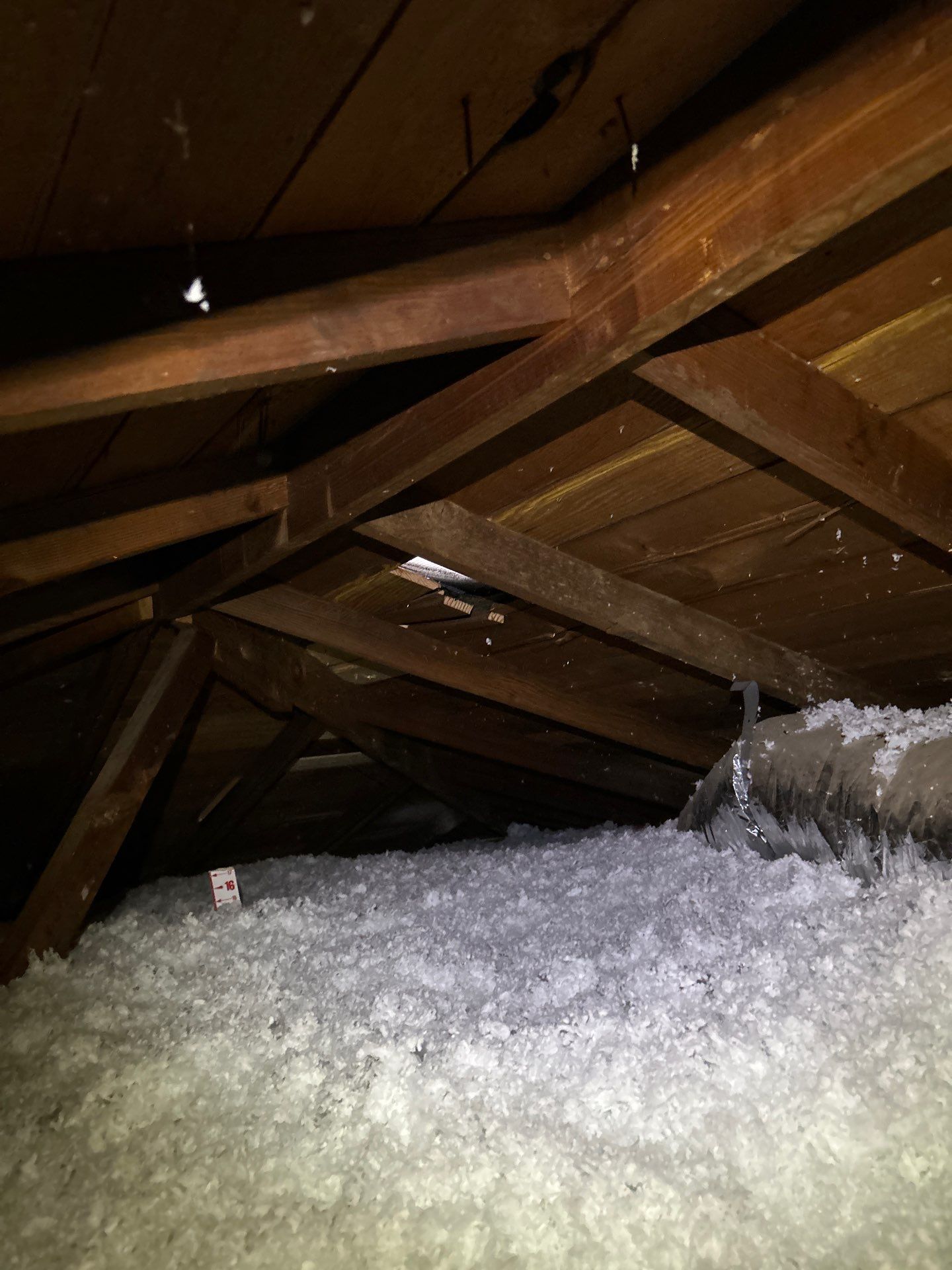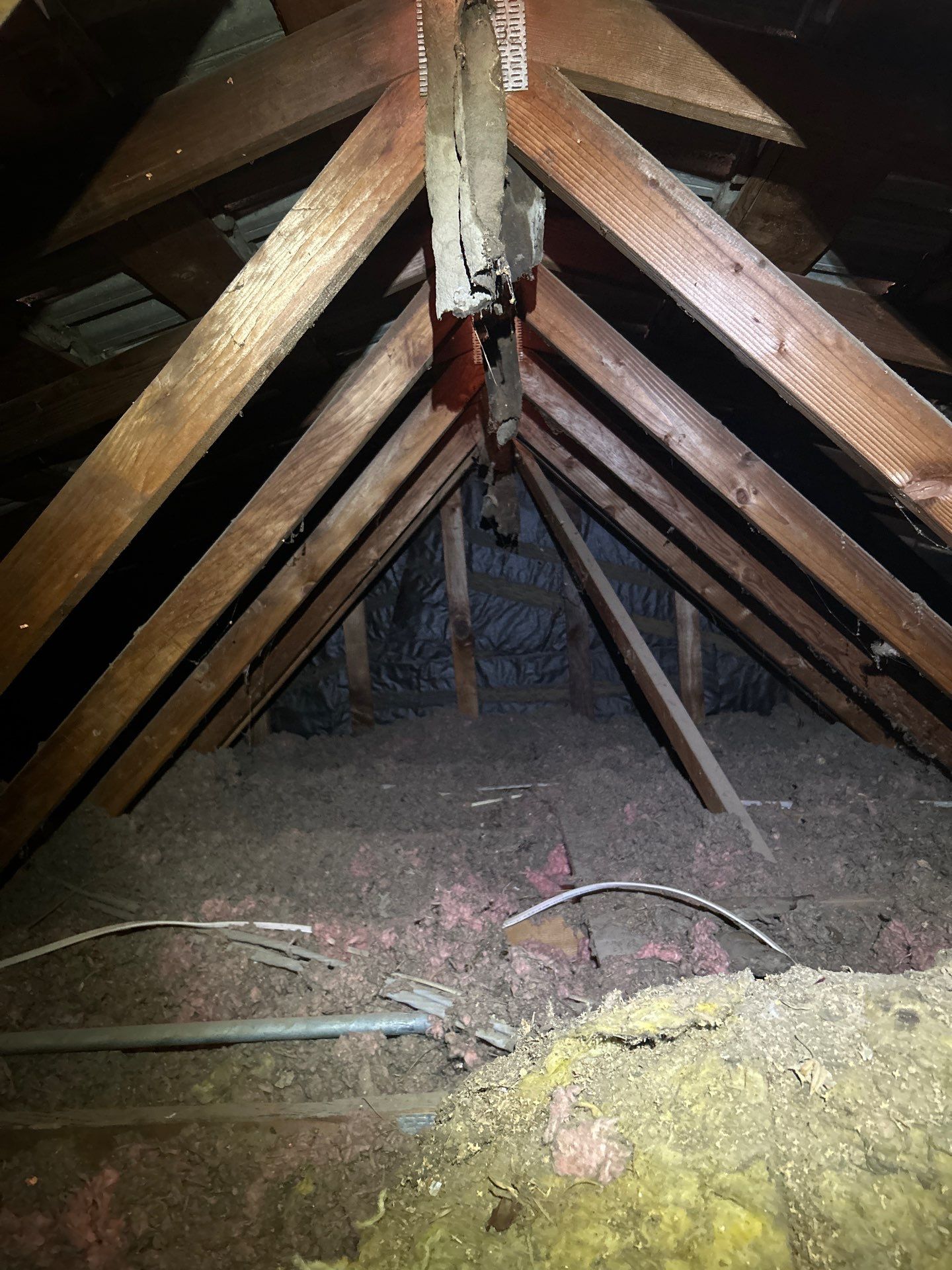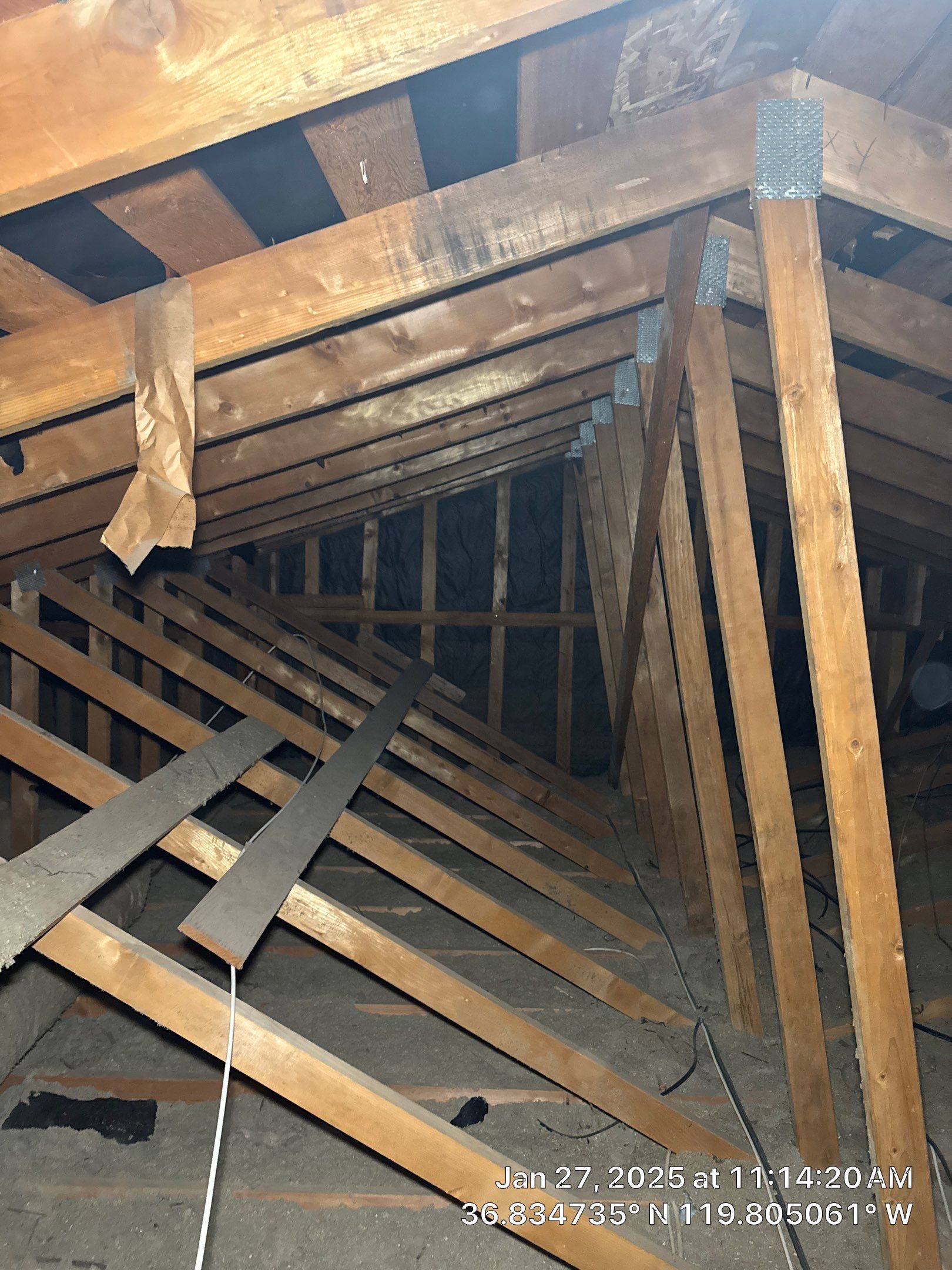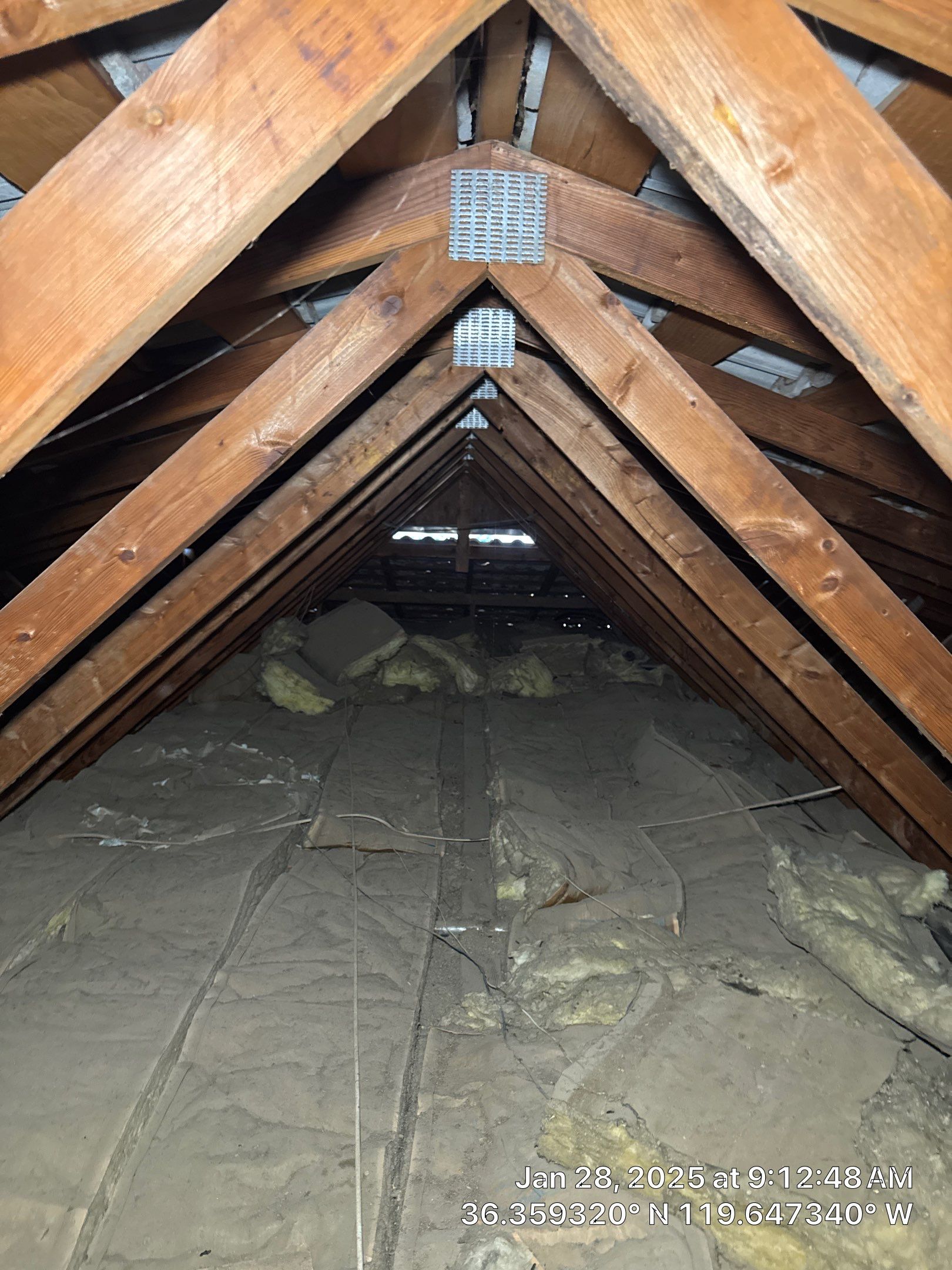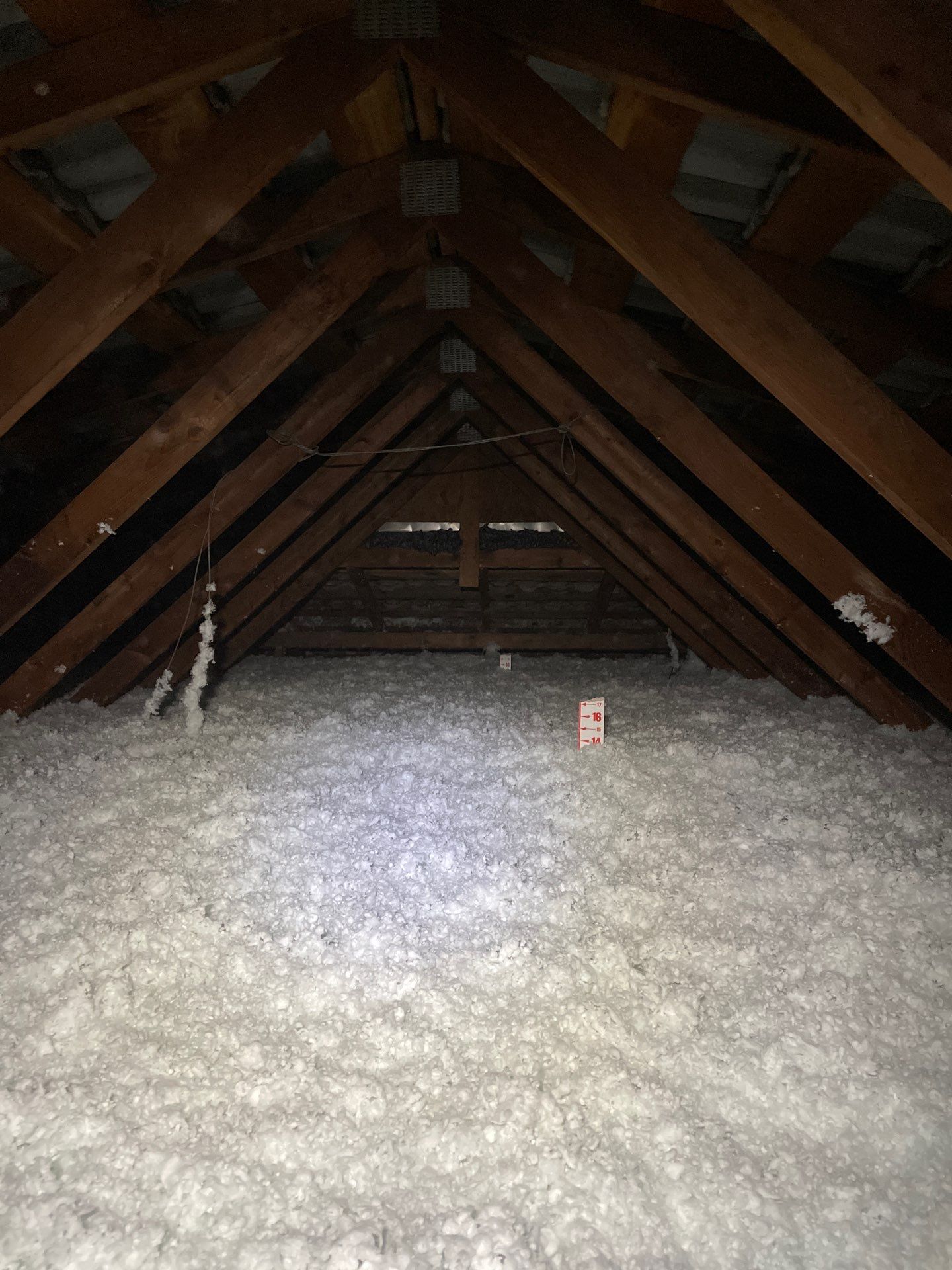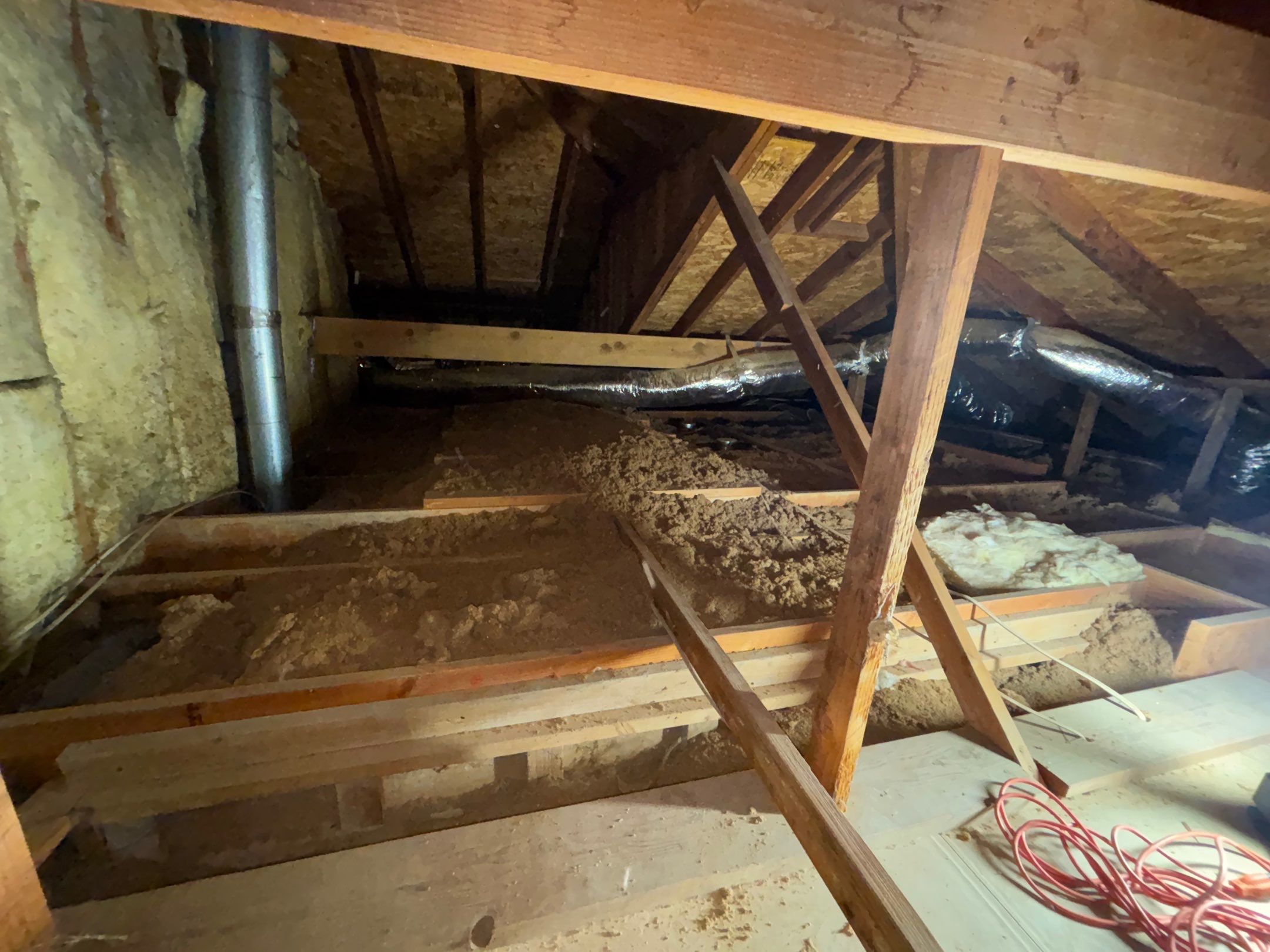Tyson Insulation Before & After Photos
Click on a photo to enlarge.
Ted contacted us because his home was struggling to maintain a comfortable temperature, no matter the season. During our inspection, we discovered that his attic had zero insulation—meaning his home was losing conditioned air at an alarming rate. Without insulation to act as a barrier, heat was pouring into the home in the summer and escaping in the winter, causing his HVAC system to work overtime and driving up his energy bills.
To solve the problem, we installed a brand-new layer of premium blown-in fiberglass insulation to an R38 level, ensuring optimal thermal resistance. In addition, we sealed all air leaks around penetrations such as pipes, wiring, and vents to prevent conditioned air from escaping into the attic. This crucial step not only enhances energy efficiency but also helps maintain consistent indoor temperatures year-round.
Now, with his attic properly insulated, Ted can expect lower energy costs, improved home comfort, and a more efficient HVAC system for years to come.
When Allison reached out to us, she was struggling with an uncomfortable home and high energy bills. Her HVAC system seemed to run constantly, but her house never felt quite right—too hot in the summer and too cold in the winter. After inspecting her attic, we quickly identified the root of the problem: only 3 inches of old, inefficient cellulose insulation. On top of that, the attic was full of dust and debris, which was negatively impacting indoor air quality.
To resolve these issues, we performed a full attic restoration. We started by removing all of the old insulation, thoroughly cleaning the attic space, and sanitizing it with a powerful disinfectant to eliminate contaminants. We then air-sealed any areas where conditioned air was escaping—such as around plumbing and wiring penetrations—to prevent energy loss. Finally, we installed a fresh layer of high-quality blown-in fiberglass insulation, bringing the attic up to the Energy Star recommended R38 level.
Thanks to this attic restoration, Allison will now enjoy a more comfortable home, improved indoor air quality, and significantly lower energy costs for years to come!
Jacob contacted us because his home in Hanford was constantly overheating, making it difficult to keep comfortable without running his AC nonstop. After inspecting his attic, we discovered the culprit—only 4 inches of old cellulose insulation, which was not nearly enough to provide proper thermal protection. Additionally, the attic was filled with dust and debris, further reducing efficiency and indoor air quality.
To resolve these issues, we performed a full attic restoration. First, we removed all the old, deteriorated insulation, clearing out any dust and contaminants. We then sanitized the entire attic with Nisus DSV, a powerful disinfectant that eliminates bacteria, mold, and allergens, ensuring a cleaner and healthier home.
Next, we air-sealed all major leakage points—such as wire and plumbing penetrations, top plates, and vents—with closed-cell foam. This step is crucial in preventing unwanted air exchange between the attic and the living spaces, reducing strain on the HVAC system. Once the space was prepped, we installed premium blown-in fiberglass insulation, bringing the attic up to the recommended R38 level for maximum energy efficiency. Lastly, we cleared the soffit vents to improve attic ventilation and prevent future heat buildup.
With his newly restored attic, Jacob will experience a significantly more comfortable home with improved temperature regulation, lower energy bills, and better indoor air quality. His HVAC system will no longer have to work overtime, leading to long-term energy savings and increased home efficiency.
Rosie reached out to us because her home in Fresno was struggling to stay cool despite constant air conditioning use. After inspecting her attic, we found only 4 inches of old cellulose insulation—far below the recommended level—along with accumulated dust and debris. This lack of proper insulation was allowing heat to seep into her home, making her HVAC system work overtime and leading to high energy bills.
To restore her attic and improve her home’s energy efficiency, we started by removing all the old, deteriorated cellulose insulation. Next, we thoroughly cleaned and sanitized the space using Nisus DSV, an industrial-grade disinfectant that eliminates bacteria, viruses, and allergens. We then air-sealed all key leakage points, including plumbing and wire penetrations, top plates, and registers, using closed-cell foam. This prevents air transfer between the attic and the living areas, improving overall energy efficiency.
Once the attic was properly sealed and prepped, we installed fresh, high-quality blown-in fiberglass insulation, bringing the attic up to an optimal R38 level. As a finishing touch, we ensured proper ventilation by clearing the soffit vents, allowing for better airflow and temperature regulation.
Thanks to this attic restoration, Rosie’s home is now far more comfortable year-round. She can look forward to reduced heating and cooling costs, improved indoor air quality, and an HVAC system that won’t have to work as hard to maintain a pleasant temperature.
John contacted us because his home was constantly fluctuating in temperature, making it difficult to stay comfortable year-round. After inspecting his attic, we found that he only had 4 inches of old cellulose insulation—far below the recommended level. This lack of insulation was allowing heat to escape in the winter and enter in the summer, forcing his HVAC system to work overtime and driving up his energy costs.
To fix the problem, we upgraded John’s attic insulation to an R38 level using high-quality, blown-in fiberglass insulation. This improvement not only enhances his home’s ability to maintain a stable indoor temperature but also helps reduce energy consumption and lower utility bills. With this upgrade, John can now enjoy a more comfortable and energy-efficient home in every season.


